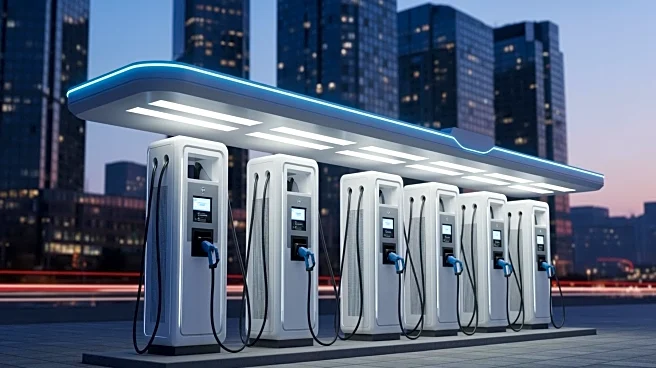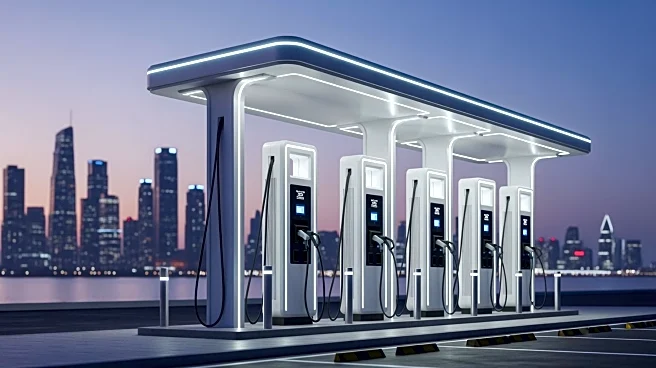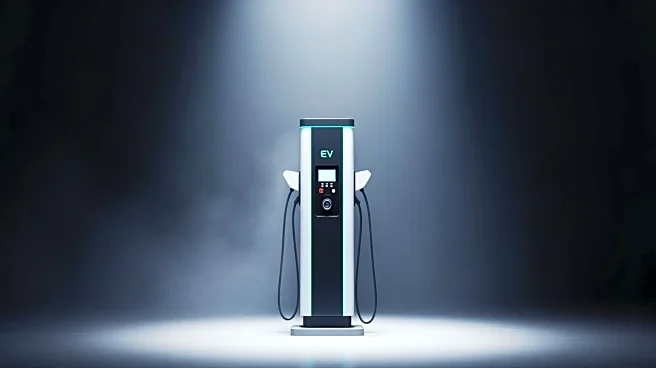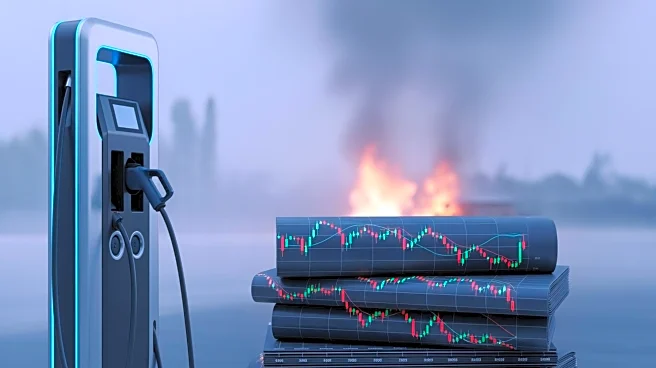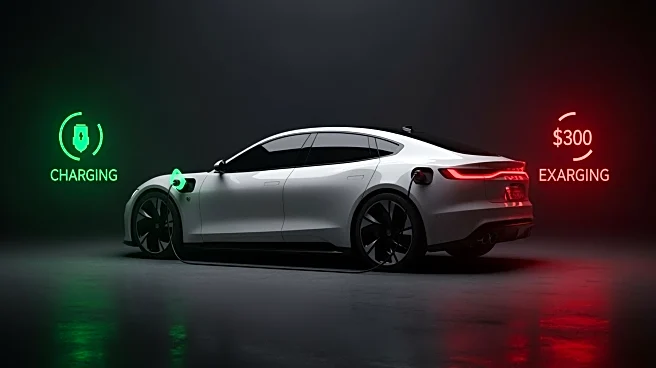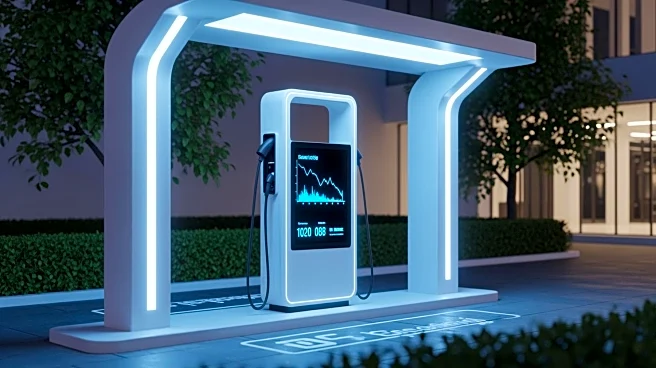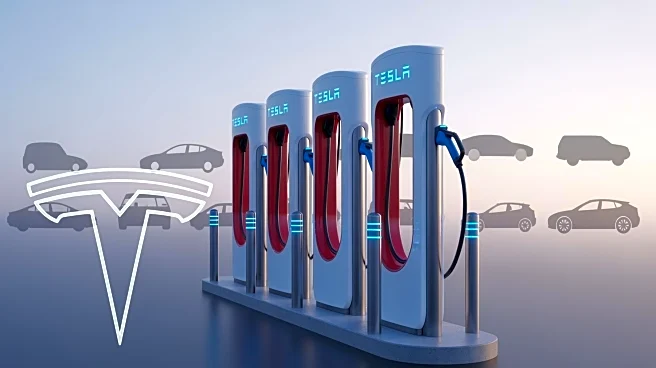What's Happening?
Rivian Automotive Inc. has announced a revision to its 2025 delivery guidance, narrowing the range to 41,500-43,500 vehicles. This adjustment comes after the expiration of the U.S. $7,500 EV tax credit
for leases on September 30, 2025, which has raised concerns about potential demand reduction. In the third quarter of 2025, Rivian produced 10,720 vehicles and delivered 13,201. Despite achieving its first positive gross profit of $206 million earlier in the year, the company continues to face challenges such as high tariffs on imported components and a high cash burn rate. Rivian's stock has experienced volatility, closing at approximately $13.57 on October 2, 2025, down about 7% from the previous day.
Why It's Important?
The adjustment in Rivian's delivery guidance highlights the broader challenges facing the electric vehicle (EV) industry, particularly in the U.S. The expiration of the federal tax credit is expected to impact consumer demand, potentially affecting sales across the EV market. Rivian's situation underscores the financial pressures on newer EV manufacturers, who must navigate high production costs and competitive pressures from established automakers like Tesla, Ford, and GM. The company's strategic partnerships, such as the joint venture with Volkswagen, are crucial for its long-term growth, but immediate market conditions pose significant hurdles. Investors and industry stakeholders are closely watching how Rivian adapts to these challenges.
What's Next?
Rivian is set to release its Q3 financial results on November 4, 2025, which will provide further insights into its financial health and strategic direction. Analysts will be looking for updates on cost reduction efforts and production efficiencies. The company's ongoing partnership with Volkswagen and its new manufacturing plant in Georgia, expected to create 7,500 jobs, are key elements of its growth strategy. However, Rivian must address its high cash burn rate and the potential impact of reduced consumer incentives to maintain investor confidence and market position.
Beyond the Headlines
Rivian's challenges reflect broader industry trends, including the need for EV manufacturers to localize supply chains to mitigate tariff impacts. The company's focus on adventure-oriented vehicles and commercial partnerships with companies like Amazon and HelloFresh could help diversify its revenue streams. However, the expiration of tax incentives and high input costs may force Rivian and other EV makers to innovate in pricing and financing strategies to sustain demand. The evolving regulatory environment and competitive landscape will continue to shape Rivian's strategic decisions.
